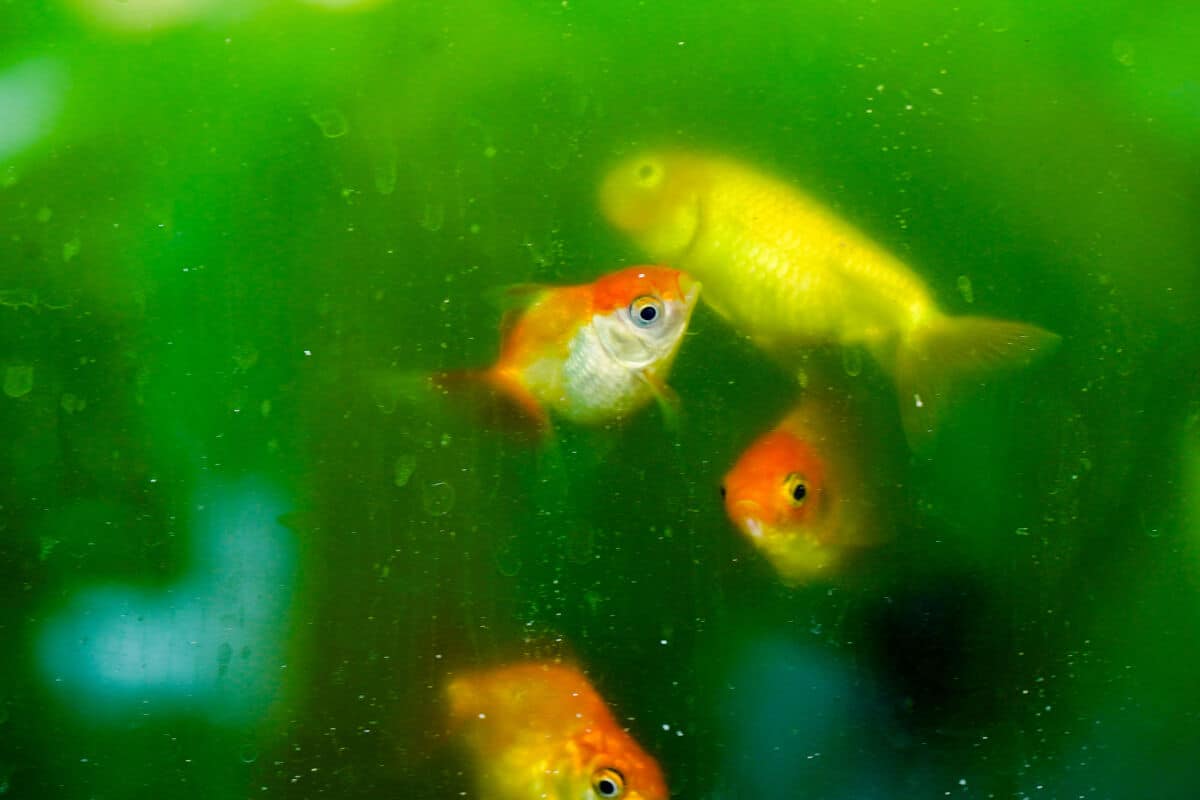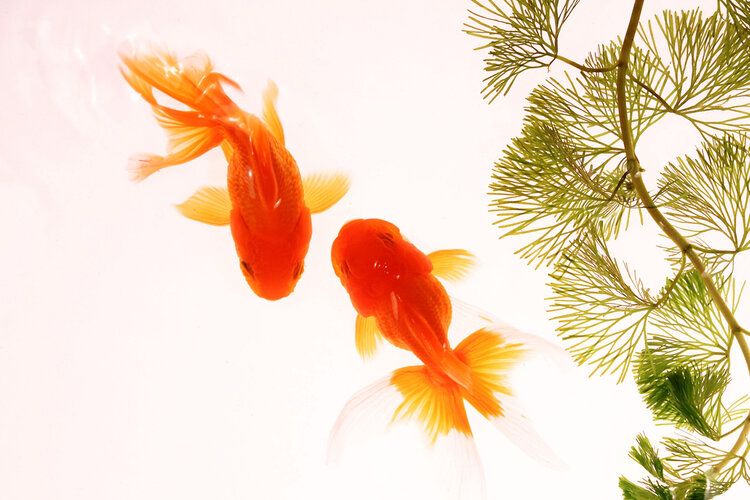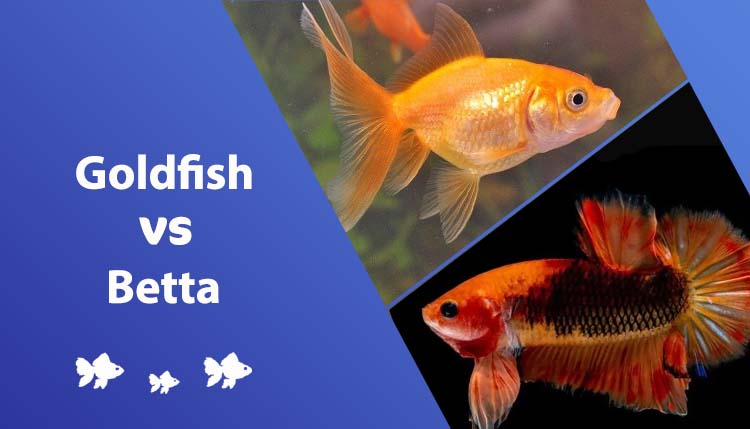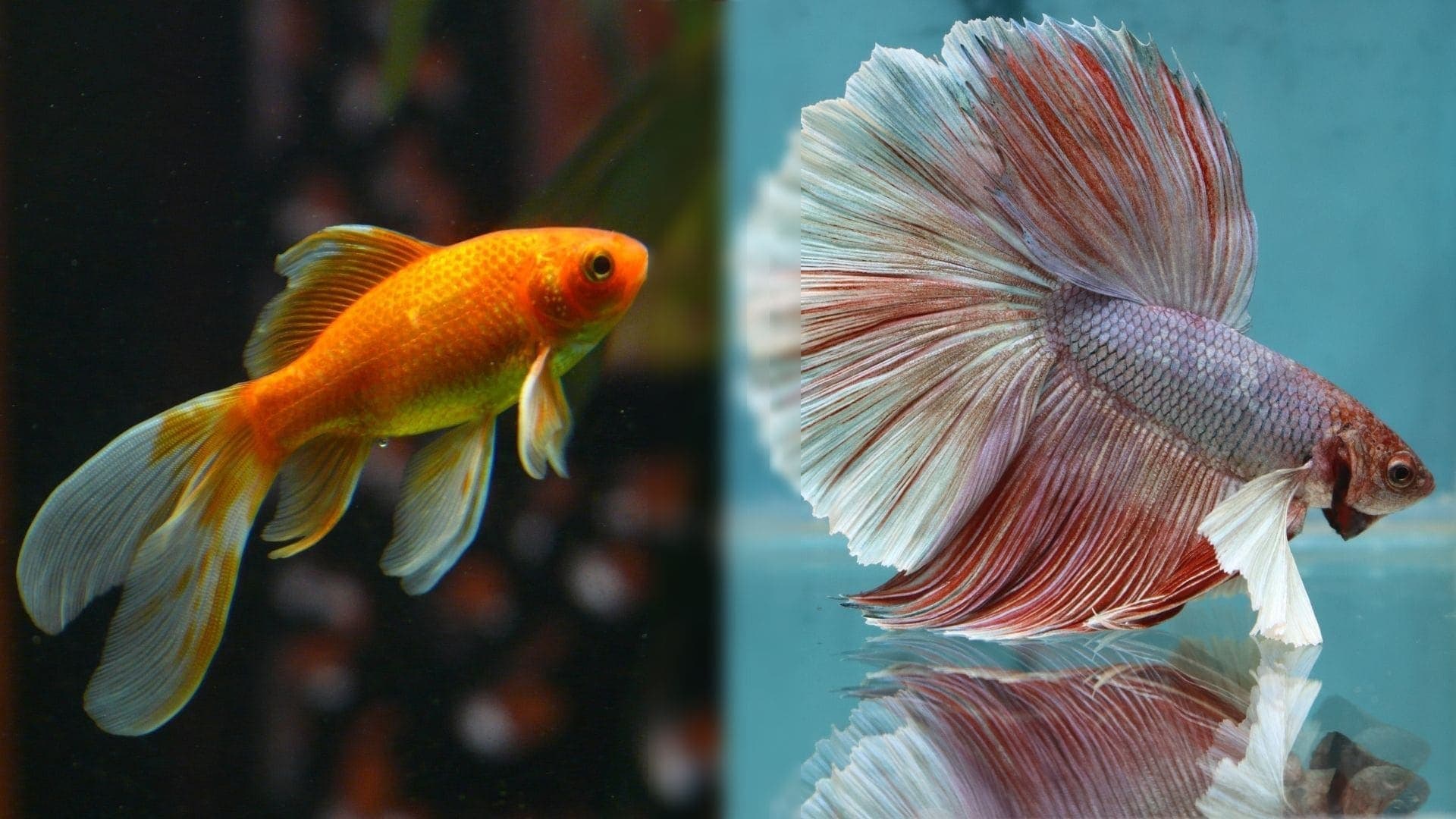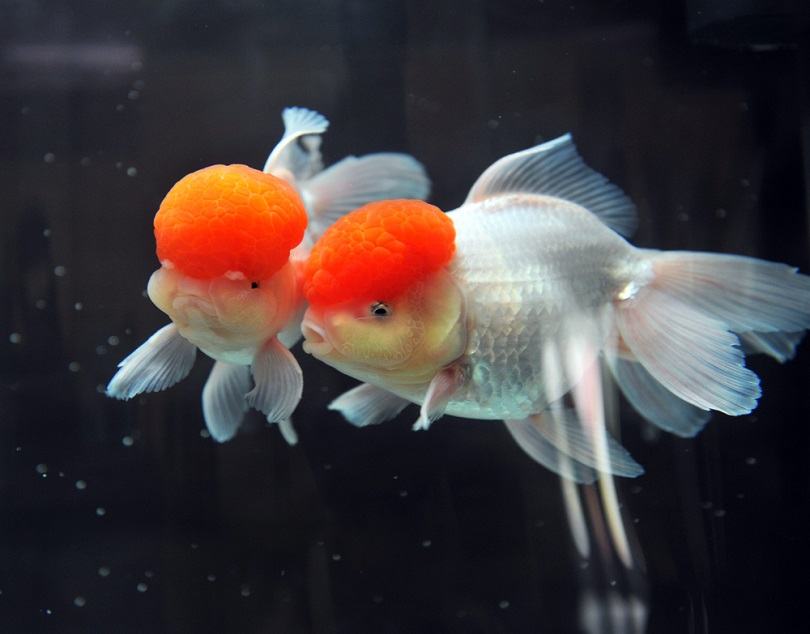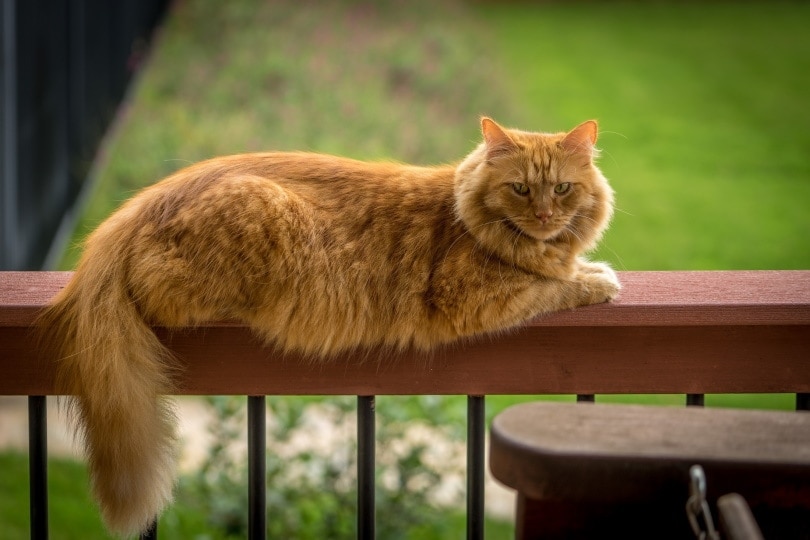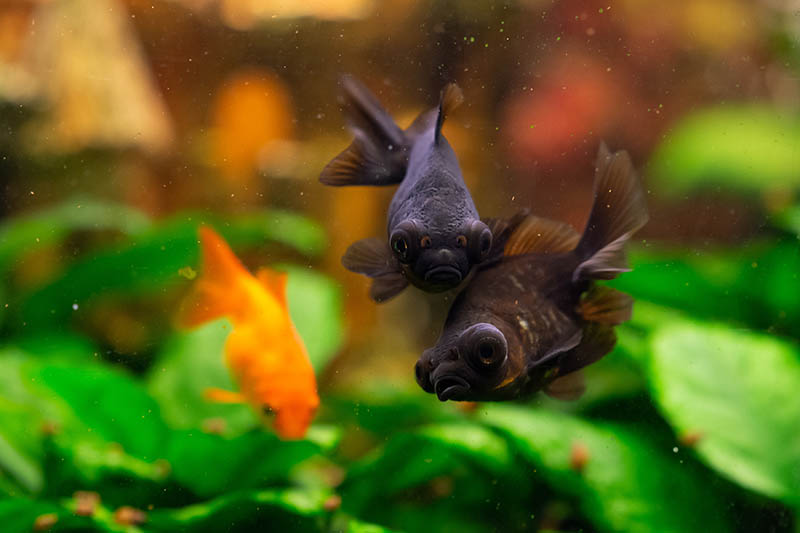24 Types of Goldfish Breeds: Identification Guide (With Pictures)

Updated on

Despite what the name suggests, goldfish sport a wide range of colors and aren’t just gold. They can be red, orange, white, yellow, black and brown, or even calico. They also come in a wide variety of shapes and sizes and with some very different physical characteristics.
In fact, there are now reported to be over 300 different unique varieties of goldfish recognized in China. There is less than half that amount in the US but still, a very large number of goldfish types exist.
With so many varieties it can be hard to identify which variety is which or to know the type of goldfish you might want to take home and enjoy in your aquarium. So to help, we’ve created the following ultimate guide to identifying different types of goldfish and packed all the information into a fun infographic you can find at the end of the article!
Goldfish Defining Features
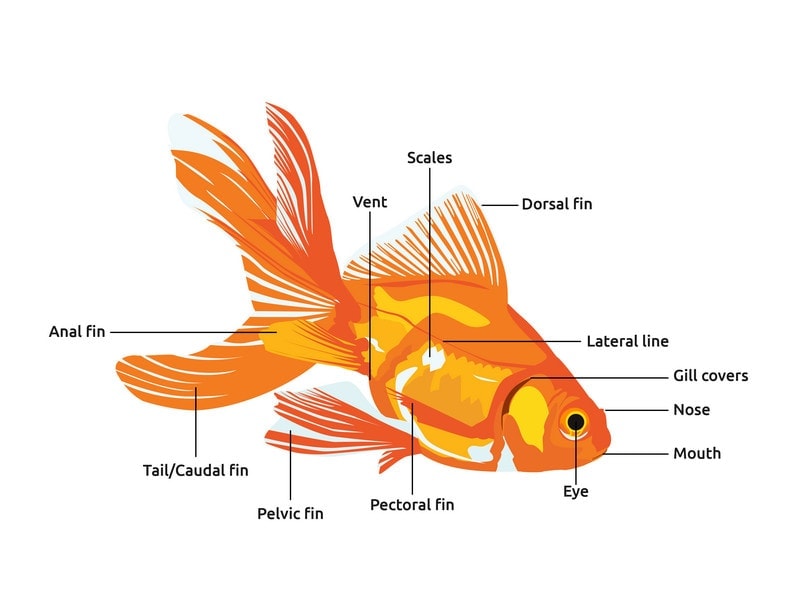
To identify any given specimen there are only a certain number of defining features you need to look for and take note of, to learn what variety of goldfish you are looking at.
Let’s take a look at these features now.
Body Shape
Goldfish effectively fit into just two broad categories of body type, most commonly described as ‘egg-shaped’ or ‘streamlined’ or ‘slim-bodied’.
The best way to show the difference is to show a comparison of both body types side-by-side:
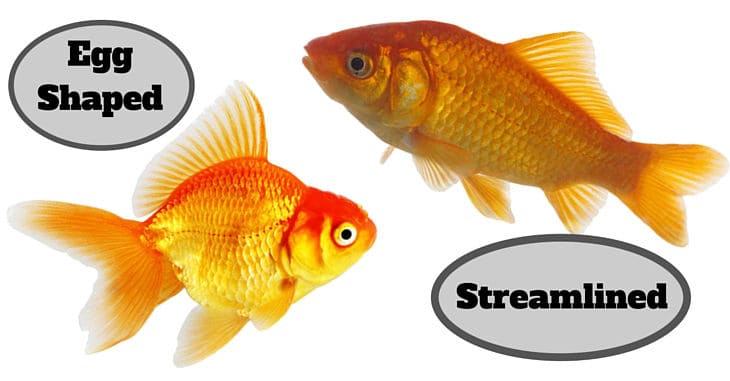
Fin and Tail Variations
One of the most dividing features of all goldfish to tell them apart is the number and shape of fins that they have.
Single or Double tail?
Putting aside different lengths and shapes, one of the main differences in tails between groups of goldfish—and how many hobby fish keepers determine their type—is whether they have a single or a double tail.
Double-tailed goldfish are predominantly egg-shaped, and are also commonly termed “fancy goldfish.” However, this isn’t always the case as there are some breeds of streamlined, torpedo-shaped varieties that have a double tail as well.
You can see an example of the single and double tail types in the image below:
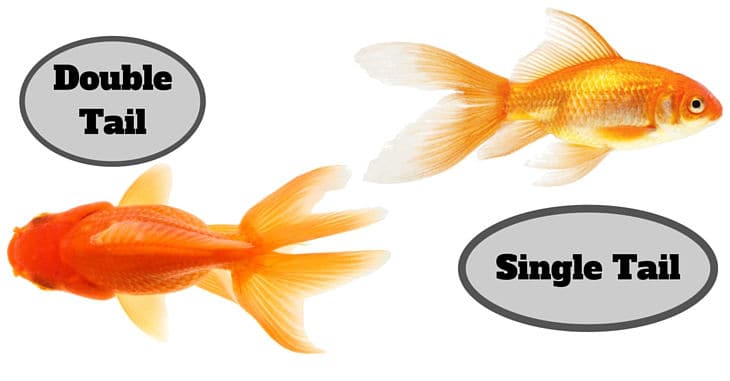
Dorsal fin?
The fin on the top (or back) of a fish is called the “dorsal fin.”
The size and shape can vary quite wildly between different varieties, but how the dorsal fin looks is more to do with how close a fish adheres to the breed standard rather than the actual breed we’re looking at.
For the purposes of classifying goldfish within this article, we will concern ourselves with whether they actually have a dorsal fin or not. Goldfish don’t necessarily have one and this is a major clue toward the variety you’re looking at.

Eye Type
Goldfish have been selectively bred to have many different eye types, some quite normal, others quite outlandish while at the same time very striking.
- Normal – Not much to say here, they are just kind of normal
- Telescope Eye – Eyes mounted inside of a very pronounced ball-like protrusion, that make the eyes extend out from the head (like a telescope)
- Celestial (upturned) eye – These are similar to the telescope eye with the difference that the eye is turned and looking directly upwards
- Bubble eye – Not truly a feature of the eyes, a bubble eye is where a normal eye is in fact surrounded by a large, balloon-like fluid-filled sack under the eyes of the goldfish
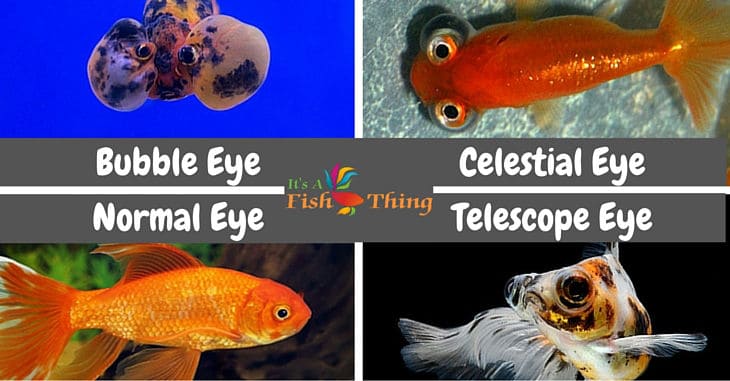
Wen Growths
A wen (often described as a ‘wen hood’) is a wart-looking or raspberry-like growth on parts of or the entire head of a goldfish that gives it a very distinctive look. Many variations of this growth exist, covering anything from just the top of the head all the way through to complete facial and head covering.
The different types of wen shall be detailed later in the article, for now, an example of a complete wen hood can be seen below.

Colors
Goldfish can sport a wide variety of either a single solid color, two-color patterning, or even “calico” which is a combination of three to four colors in a striking pattern all at once.
Their colors can include any of the following, either as a solid single color or almost any mix of 2 or more: Red, orange, gold, black, white, gray, brown, blue, yellow, and calico.
You can see the beautiful colors in the images throughout the rest of this page.
Goldfish Types – Photos and Descriptions
Now that you’ve seen examples of the different physical characteristics that determine the variety of a goldfish, let’s put it all together and take a look at the most common types you will come across in fish stores and home aquariums across Europe and the USA.
This list is not exhaustive, there are so, so many more than we can detail in one short article, but the following list will cover more than 99% of the ones you’re likely to ever see.
How Many Species Of Goldfish Are There?
The fact of the matter is that there are hundreds of different goldfish species out there. Most would say that there are 15 real species of goldfish, with the rest falling into one of those 15 categories. Some are more well-known than others and some are more popular. Let’s go over the most popular types of goldfish right now
For management and better presentation of the information, we’ve bundled the many different types of goldfish into the following 5 groups:
- Slim-bodied/streamlined with a single tail
- Streamlined with a double tail
- Egg-shaped with a dorsal fin
- Egg-shaped without a dorsal fin
- Miscellaneous but still often seen varieties
The 24 Types of Goldfish
Within each of the groups are further divisions according to eye type, color, and more.
So, that’s enough chatter, let’s get into the meat of the article!
Slim-bodied/Streamlined Goldfish with a Single Tail
1. Common Goldfish
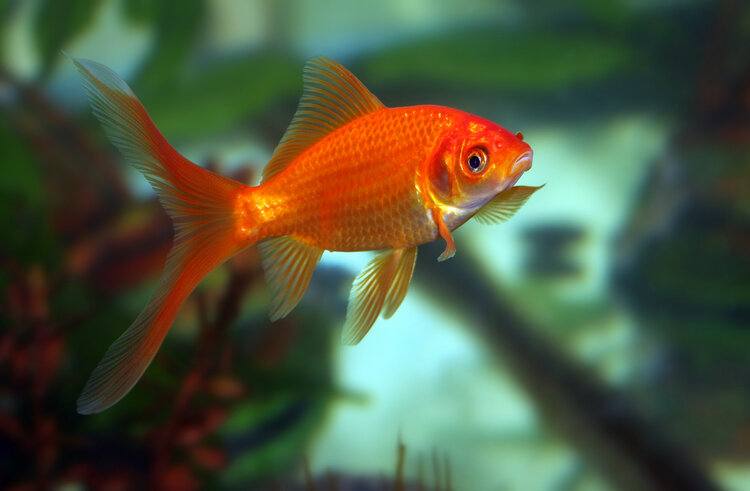
- Defining features: None
- Description: A simple fish with no striking, standout features; the most common goldfish type of all, hence the name
- Body: Streamlined
- Tail: Single
- Dorsal fin: Yes
- Eye Type: Normal
- Wen hood: No
- Color: Solid or a mix of orange, red, blue, black, or brown
As the name implies, this goldfish is probably the easiest to find. They’re often given away as prizes at fairs or sold for cheap as “feeder fish” for reptiles or other fish. Yes, the Common is probably the most underrated type of goldfish. But: For being so lowly, they come from tough stock. Extremes in temperature or even water quality don’t phase them NEARLY as much as they would a fancy variety. Want to know why? They’re closest in body shape to their carp granddaddies. Commons are most commonly found in bright metallic orange, though they can come in any color. (If it has black though, it’s a Shubunkin.) They have stiff fins that don’t drape and a long, flat body. The single tail is slightly forked and the lobes are short and round. Few people know that these little guys can grow to a length of 12 inches long! [Read More about the Common Goldfish Here]
2. Comet Goldfish
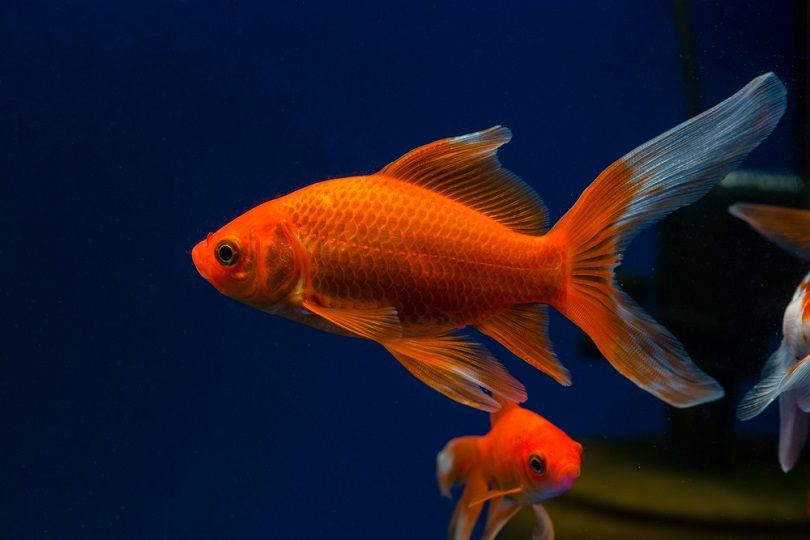
- Defining features: A flowing forked tail as long as their body
- Description: Similar to a common, though all fins are longer and finer
- Body: Streamlined
- Tail: Single, long, and forked
- Dorsal fin: Yes
- Eye Type: Normal
- Wen hood: No
- Color: Most commonly red or orange, with a white pattern on the body, though silver and yellow are seen
The body shape of the Comet is pretty much the same as the common. Their fins get much longer, though. The Comet’s tail can grow to be almost as long as the body! Whoever named it was reminded of the trailing a comet shooting across the sky. Well, they are pretty fast and athletic fish too. Another fun fact: This goldfish breed is the only one to have originated in the United States. You can find Comets all over the place like the Common. As far as coloration goes, you can find this fish in metallic red, but it comes in a wide variety of other patterns and colors too. Comets might be the longest of all goldfish and can get up to 14 inches (if you include the tail).
3. Shubunkin
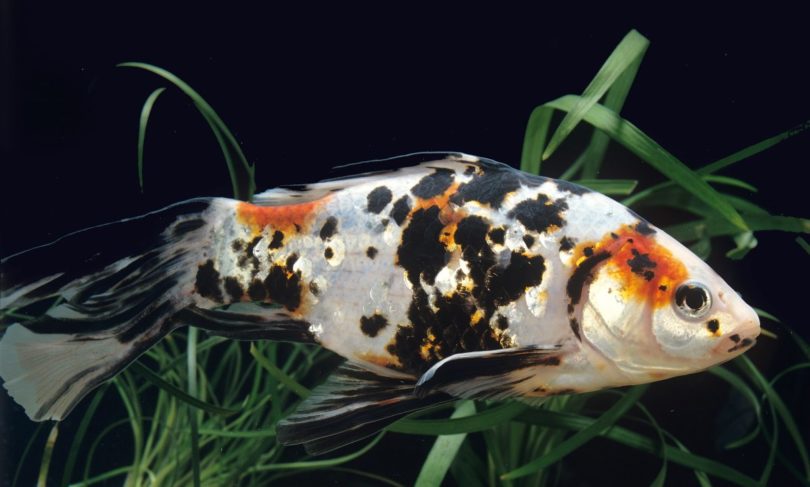
- Defining features: Their calico coloring
- Description: Essentially a comet with calico coloring; most with the same, long forked comet tail, though “London shubunkin, have a shorter tail and “Bristol shubunkin” a heart-shaped tail
- Body: Streamlined
- Tail: Single, mostly long and forked
- Dorsal fin: Yes
- Eye Type: Normal
- Wen hood: No
- Color: Calico, a mosaic mix of reddish-orange, white, black and blue
What makes the Shubunkin goldfish different from the Common and the Comet? One thing: coloration. It almost always comes in calico color pattern with metallic and clear scales. A good specimen has a lot of blue mixed in with its red, white, and black tones. Much of what you see in a calico goldfish is actually on their skin underneath the clear scales. There are three main types of Shubunkins:
- The American, (also called ribbon-tail Shubunkin) has a long, deeply indented tail
- The Bristol, known for its very large, slightly forked tail with round lobes shaped like the letter “B”
- The London, which has a shorter, rounder tail like the Common
Shubunkin goldfish are sturdy fish and reach up to 14 inches long. [Read more about Shubunkins here.]
If you're new to the world of goldfish or are an experienced goldfish keeper that loves to learn more, we recommend you check out our best-selling book, The Truth About Goldfish, on Amazon. From diagnosing illnesses and providing correct treatments to ensuring your goldies are happy with their setup and your maintenance, this book brings our blog to life in color and will help you to be the best goldfishkeeper you can be.
 Slimbodied/Streamlined Goldfish with a Double Tail
Slimbodied/Streamlined Goldfish with a Double Tail
The next grouping of different goldfish varieties all have a streamlined body but with a double tail, as opposed to the single-tail seen in the previous group.
4. Wakin Goldfish
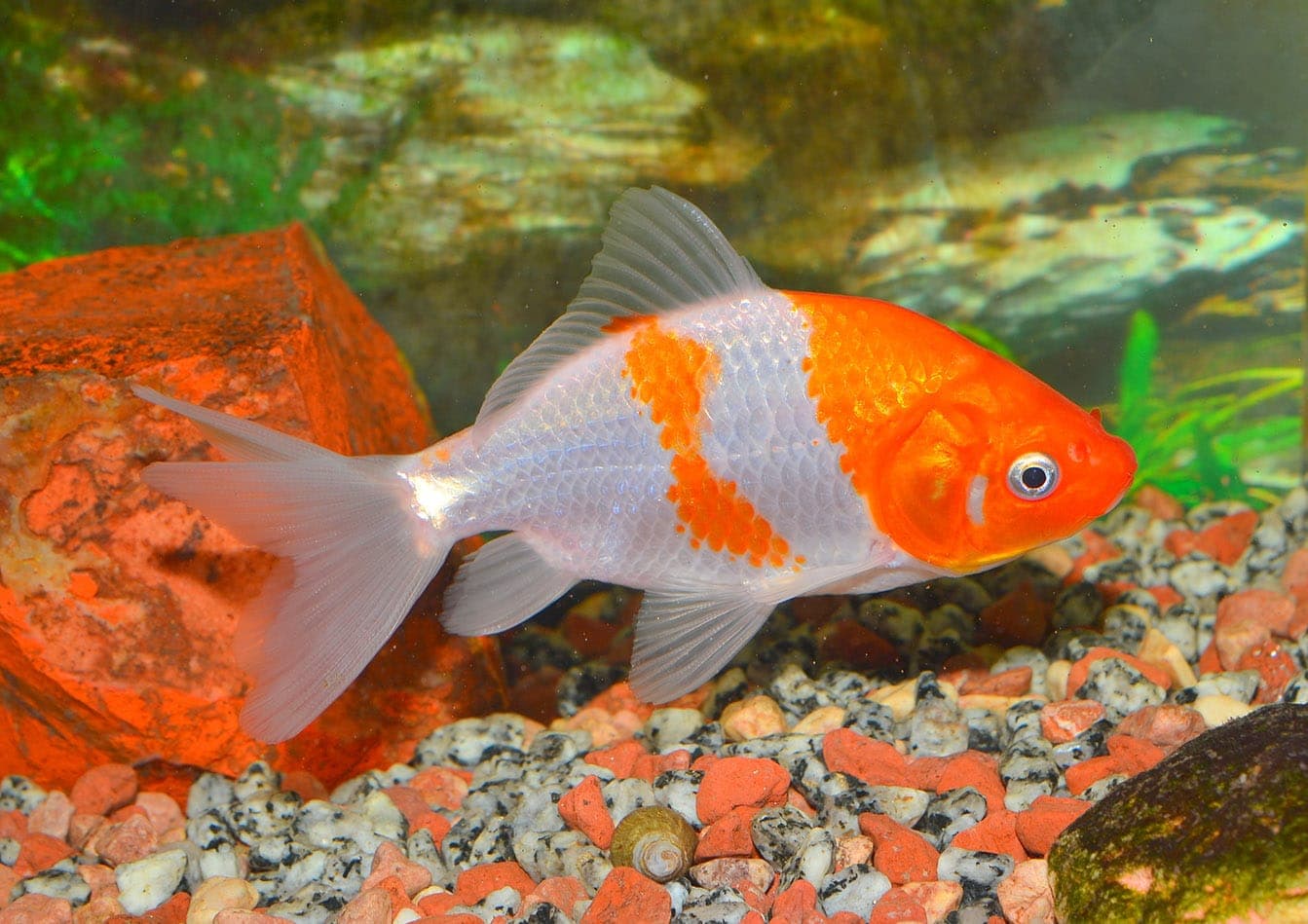
- Defining features: Red or white body in the most prized varieties
- Description: Very similar shape to the common goldfish
- Body: Streamlined
- Tail: Split double
- Dorsal fin: Yes
- Eye Type: Normal
- Wen hood: No
- Color: Red and white pattern unique to each individual
This breed is finally making a comeback. (Hint: you say it “wa-keen.”) Their bodies are a little deeper than a Comet or a Shubunkin. But instead of having one tail fin, they actually have two fan-shaped ones. They also have two anal fins instead of one. So, technically it’s a fancy goldfish. But in every other way, it’s most like a single-tail. Wakins have helped to create many of the fancies we have today. They usually have red or red and white coloring like a koi. Usually, they get around a foot long.
5. Jikin Goldfish
- Defining features: A Peacock Tail in 4 parts that splay outwards almost 180 degrees, shaped like an X when viewed from behind
- Description: Developed from Wakin, streamlined long body though fuller than a common with a double tail
- Body: Streamlined
- Tail: Split double that looks like 4 parts, often called a “peacock tail” and looks like an X from behind
- Dorsal fin: Yes
- Eye Type: Normal
- Wen hood: No
- Color: Solid white with red found only on tail, fins, mouth, and gills
The shape of the Jikin goldfish is pretty much the same as the Wakin’s. Long body, short double tail. What makes them special is their color pattern. It’s called “12 Reds.” The Jikin is white with red lips, both gill plates, dorsal fin, and all 4 paired fins. Sometimes any extra red scales on the body of the fish are plucked off by hand to keep the pattern! They will grow to be a little under a foot in length.
6. Watonai Goldfish
It’s a Comet…it’s a Wakin…it’s…a Watonai! Wait, what?! The Watonai is an uncommon goldfish that has been around for a long time. It looks sort of like the Comet but has a double tail like a Wakin. You could almost think of it like a long-bodied Fantail. How? Crossing a Ryukin with a Wakin gives you this fish. These fish are very strong and do great in ponds. You can find them in quite a variety of colors They get pretty large, too—12 inches long, in fact.
Egg-Shaped Fancy Goldfish Breeds
7. Fantail Goldfish
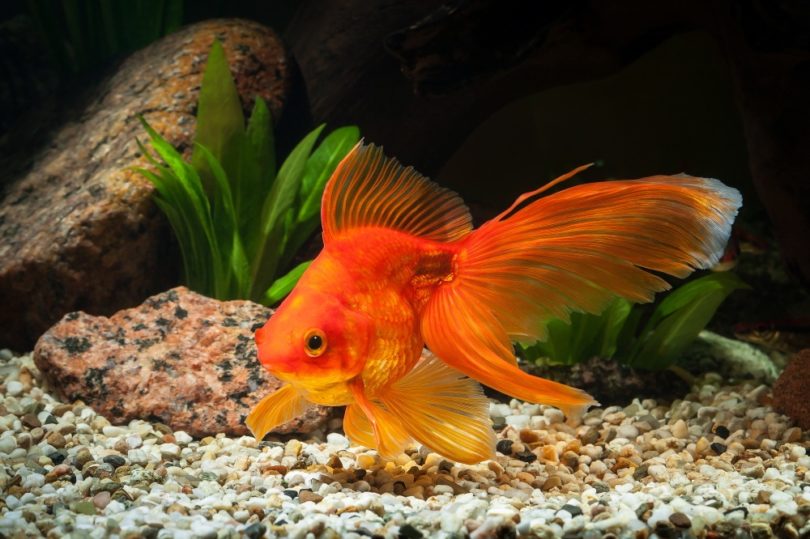
- Defining features: None – The stereotypical double-tail / ‘fancy’ goldfish
- Description: Similar to a veil tail but with very long fins and a long flowing tail that is barely—if at all—forked
- Body: Egg-shaped
- Tail: Double, forked.
- Dorsal fin: Yes, large and upright.
- Eye Type: Normal
- Wen hood: No
- Color: All solid colors, mixed or calico
Fantails are a super popular goldfish type. They’re also the hardiest of the fancies. They can even live in ponds! The Fantail’s tail has 3 or 4 lobes shaped like a fan (that’s why it’s called a fantail!). Tidbit: This tail is split down the middle in better specimens. They come in a variety of colors and patterns, the most common being metallic orange or nacreous calico. Fantails can reach 8 inches or more.
8. Ryukin Goldfish
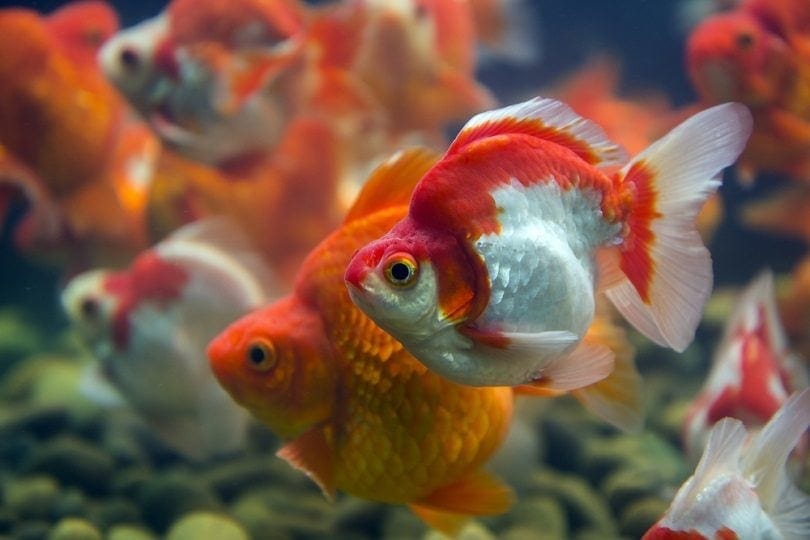
- Defining features: A large dorsal hump where their head joins their back, a clear hump is seen extending over their back
- Description: Similar to a fantail but with a clearly defined dorsal hump on their back
- Body: Egg-shaped
- Tail: Double-forked
- Dorsal fin: Yes
- Eye Type: Normal
- Wen hood: No
- Color: Red or red and white
Ryukins have a VERY deep body and a hump behind their head. Generally, a bigger hump means a better fish. Their noses are also pointier (the better to bite other goldfish with). You can find both short-tail and long-tail Ryukins. Guess what? Their pointier heads make them more prone to being aggressive. They are most often found in solid red or red and white coloration. Most get around a total of 9 inches in length.
9. Veiltail Goldfish
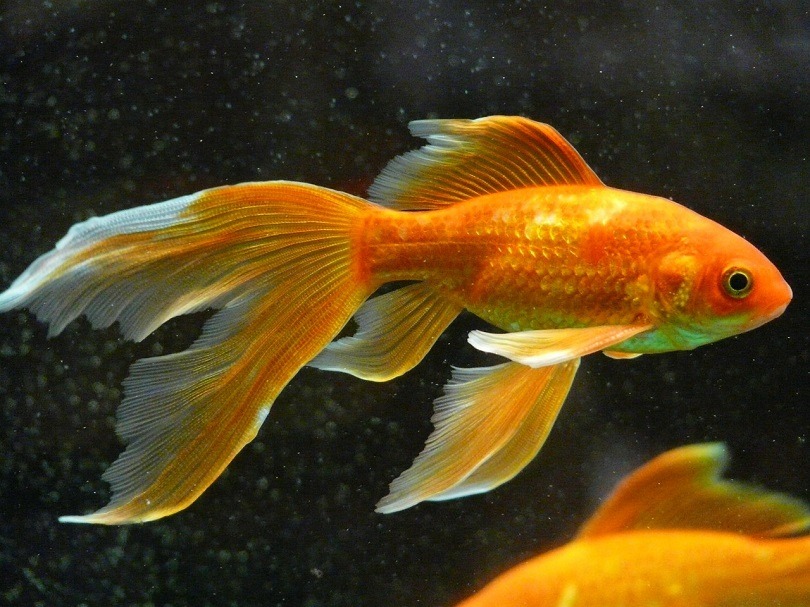
- Defining features: A large dorsal hump. Where their head joins their back, a clear hump is seen extending over their back
- Description: Similar to a fantail but with very long fins and a long flowing tail that is barely—if at all—forked
- Body: Egg-shaped
- Tail: Double; very long and flowing
- Dorsal fin: Yes; very large, often flowing not stiff
- Eye Type: Normal
- Wen hood: No
- Color: All colors, solid or mixed
Ever seen a goldfish with flowing square-shaped fins? You might have come across a Veiltail (aka Broadtail). They’re like fantails with really long fins. Veils come complete with tall dorsal fins and long other fins. Their fins may even drag on the bottom of the tank! This makes them VERY slow swimmers. The Veiltail is also more delicate than most fancies. Veils reach 8 inches long but with the fins included they can get up to 12 inches long.
10. Telescope Eye
- Defining features: Name defining ‘telescope eyes’
- Description: Just like a fantail, but with large, protruding, telescope eyes
- Body: Egg-shaped
- Tail: Double-forked
- Dorsal fin: Yes
- Eye Type: Telescope
- Wen hood: No
- Color: Solid or mixed red, orange, white, black, or calico; Black Moor – Black with a silver belly Panda Moor – Black and white patterning
You can recognize a Telescope Eye by its huge amazing eyes. They protrude outwards but the fish can’t see any better because of them! In fact: Telescopes are visually impaired. Their eyes are delicate and can even come off completely. There are many names for the Telescope Eye goldfish, including:
- The Popeye
- The Demekin (Japanese name)
- The Dragon Eye (Chinese name)
Telescopes come in tons of different colors. Some “varieties” of goldfish are actually special colors of the Telescope. Black Moors are solid black Telescope Eyes. Panda Moors are white ones with black points.
11. Oranda
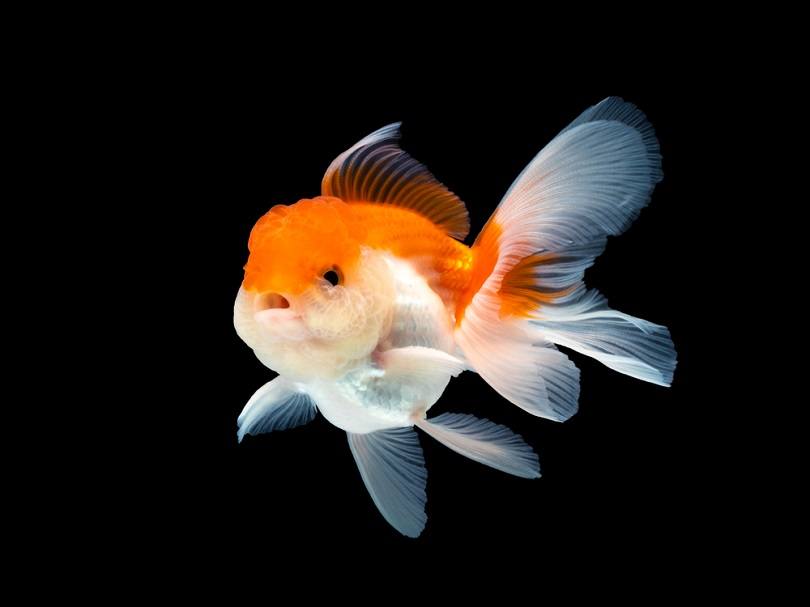
- Defining features: A large, wart-like ‘wen hood’ on their head
- Description: Looks like a standard veiltail with a large wen hood on their head
- Body: Egg-shaped
- Tail: Double; long and flowing
- Dorsal fin: Yes
- Eye Type: Normal
- Wen hood: Yes
- Color: Mostly red or orange and white, though all colors do exist
Orandas are a favorite goldfish breed (and for good reason). Some people jokingly call them the “brain fish.” That’s because the Oranda has a tall head growth, called a wen. It’s funny: The wen can cover the head, cheeks, and even the gill covers for a “puppy face” effect. They can be found in just about any color. Red Cap Orandas are all white with a bright red hood. Get this: an Oranda goldfish holds the record for the largest goldfish ever recorded at 16 inches long! But normally they get to be 12 inches. They are surprisingly hardy too.
12. Butterfly Tail Goldfish
- Defining features: A tail shaped like a butterfly when viewed from above
- Description: A standard telescope eye, but with a tail like a butterfly viewed from above
- Body: Egg-shaped
- Tail: Double, large, shaped like a butterfly
- Dorsal fin: Yes
- Eye Type: Telescope
- Wen hood: No
- Color: All colors, solid or mixed
Whether or not this fish is actually a breed of goldfish or just has several features from other types is a subject of debate among goldfish keepers. But the fact is – it’s so popular that it’s generally recognized as one. As the name implies, the tail of this fish is spread horizontally and shaped like a beautiful butterfly in flight. You’ll find it sporting telescope eyes most of the time. These were bred to be top-view fish (aka seen from above). But can be greatly enjoyed from an aquarium, too. They will generally get to be 6 to 8 inches long. Read more about the Butterfly goldfish here.
13. Tosakin Goldfish
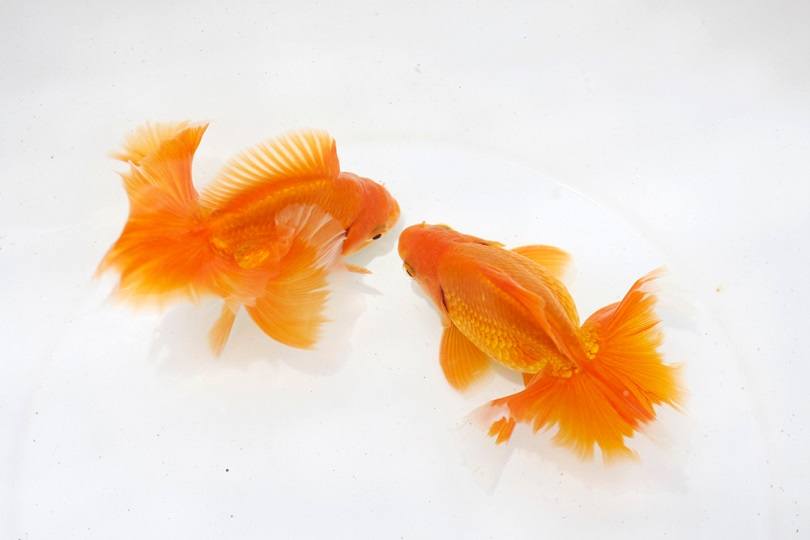
- Defining features: The only type to have a double but undivided (joined) tail
- Description: Similar body to a ryukin with the ‘dorsal hump’, but with undivided tail splayed sideways
- Body: Egg-shaped
- Tail: Double, large, undivided curled
- Dorsal fin: Yes
- Eye Type: Normal
- Wen hood: No
- Color: Red or red and white
Tosakins are a rare breed of goldfish. From the side, they aren’t much to look at but you need to view them from above. They have a beautiful fanning tail that twists at the ends (sometimes even twice!). The tail doesn’t fork and sits on the fish horizontally. Tosakins are pretty fragile. They don’t grow very large either, reaching only around 6 inches.
14. Pearlscale
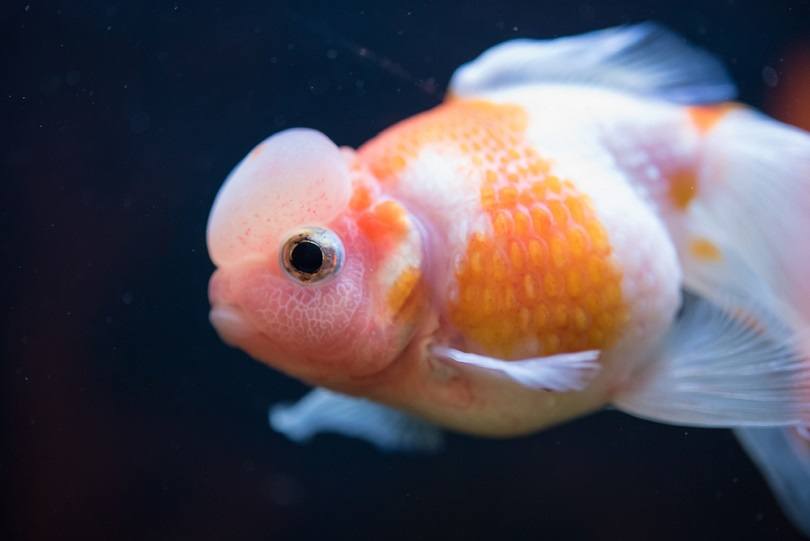
- Defining features: Extremely round bodies and raised white scales like pearls
- Description: Short, almost bloated-looking rounded bodies, more so than any other goldfish, with name-defining raised white scales like pearls
- Body: Egg-shaped, very rounded
- Tail: Double
- Dorsal fin: Yes
- Eye Type: Normal
- Wen hood: Mostly not, some lesser-seen subtypes do
- Color: Mostly orange and white or calico though all colors do exist
It isn’t hard to figure out why this fish is called the Pearlscale. Their elevated scales are bead-shaped. Better quality Pearlscales have these “pearls” arranged in neat rows. The body of the Pearlscale is fat and round like an orange! Interesting fact: Some have a wen. Others have a “bubble” called a crown. Still others have a double bubble crown! They come in all colors, the most common being red and white or calico. They reach 6 to 8 inches in length. Read more about the Pearlscale goldfish here.
Egg-Shaped Fancy Goldfish Breeds with NO Dorsal Fin
15. Celestial Eye Goldfish
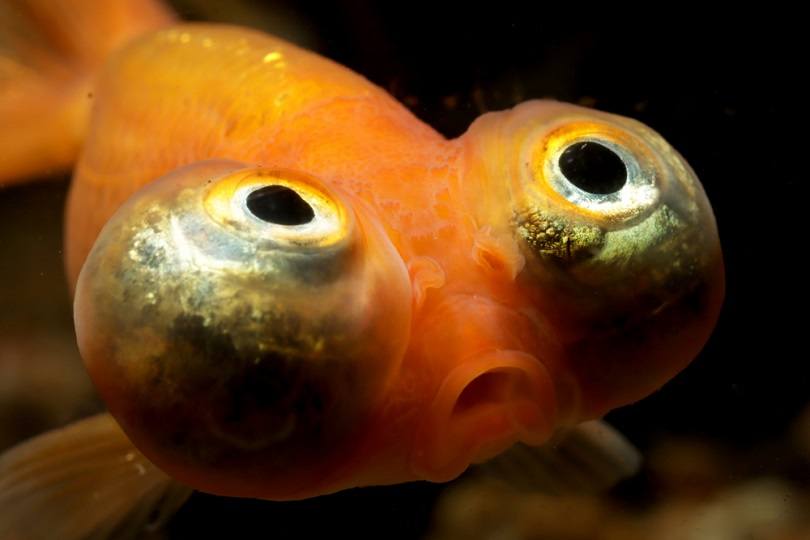
- Defining features: Bulging, upturned eyes pointing upwards
- Description: One of the smallest types of goldfish, looking much like the “eggfish”, with upturned eyes and no dorsal fin
- Body: Egg-shaped
- Tail: Double
- Dorsal fin: No
- Eye Type: Upturned, celestial
- Wen hood: No
- Color: Mostly orange or orange with silver belly but other colors do exist
This wild-looking goldfish is called the “stargazer” by the Chinese – and for good reason! Their eyes are like big shiny opals turned to the sky. This gives them a curious, pleading expression. It was actually the Japanese who worked to get their eyes pointed to the heavens. As for colors… You can commonly find the Celestial in metallic red or orange, though black is growing in popularity. Like the Bubble Eye, it will reach a length of 6 inches.
16. Bubble Eye

- Defining features: Unmistakable, very large fluid-filled sacs under their eyes known as bubbles
- Description: Very large sacs under their eyes which are turned upward, otherwise identical to a celestial
- Body: Egg-shaped
- Tail: Double
- Dorsal fin: No
- Eye Type: Bubble eyes, upturned with large fluid-filled sacs
- Wen hood: No
- Color: Mostly orange or orange with silver belly but other colors do exist.
What catches your eye about this kind of goldfish? It’s the sacks of fluid that bulge from underneath its eyes! They wobble like jelly as the fish moves through the water. Definitely one of the more delicate varieties – their “bubbles” can pop on sharp objects! Solid orange and calico are some patterns you might see Black Bubble Eyes are getting pretty popular. The Bubble Eye doesn’t get big. 6 inches is about it. [Learn all about the Bubble Eye Here…]
17. Lionhead
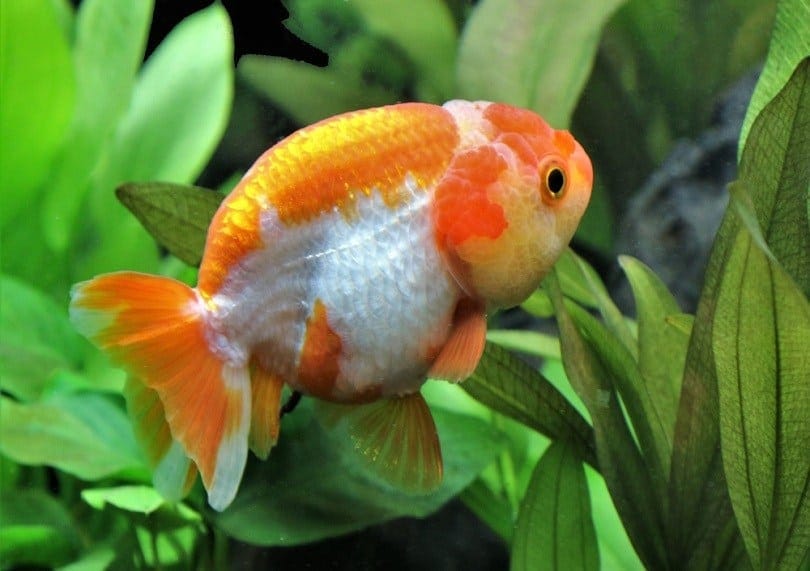
- Defining features: No dorsal fin but a wart-like wen hood covering their head
- Description: Like an “egg-fish”, no dorsal fin, but with the largest wen hood head growth of any other type
- Body: Egg-shaped
- Tail: Double, short, and small
- Dorsal fin: No
- Eye Type: Normal
- Wen hood: Yes, the largest of any goldfish
- Color: Mostly red or orange, some with white patterning
Did you know this fish was bred to look like a Pekingese? Its wen covers its entire head, giving it a puffy face (cute!). The Lionhead has no dorsal fin – the slope of its back is flat and smooth. It has a short double tail and all of its fins are paired. You can find Lionheads of almost every color and pattern variety. They grow anywhere from 6 to 8 inches long. Read more about the lionhead goldfish.
18. Ranchu Goldfish
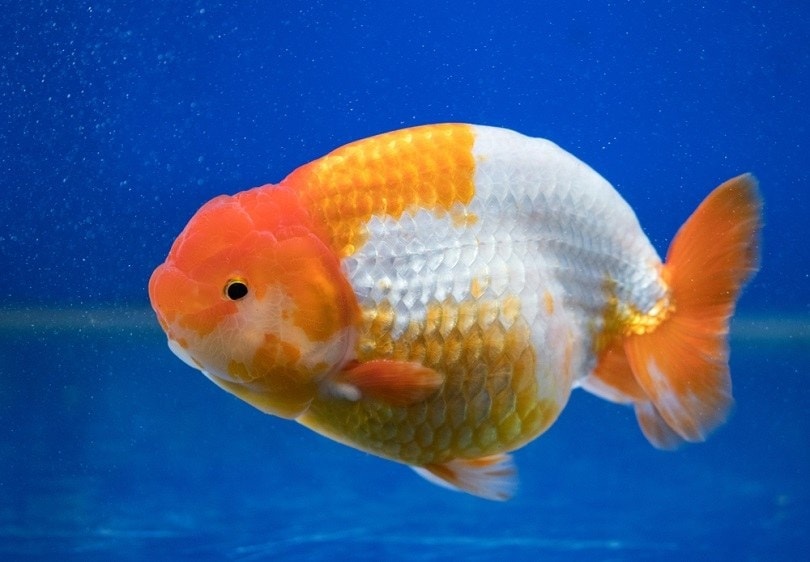
- Defining features: A dorsal-less, highly arched back
- Description: Shaped like an egg-fish, very similar to a lionhead but with a stand-out, highly noticeable arched back
- Body: Egg-shaped
- Tail: Double, very short, and small
- Dorsal fin: No
- Eye Type: Normal
- Wen hood: Yes
- Color: Mostly red or orange, with white patterning but other colors do exist
“Ranchu” means king of fish. Once it was the most expensive goldfish you could find. But now there are more available so the price has gone down. It can be tricky to tell the difference between the Ranchu and the Lionhead—they look almost the same! Here’s how: Ranchus have a rounder back and a tighter tail tuck (where the tail meets the body). They get the same size as the Lionhead. You can read more about Ranchu goldfish here.
19. Pom Pom Goldfish
- Defining features: 2 nasal growths that look like a pair of cheerleader’s pom-poms
- Description: Like an ‘egg-fish’, usually no dorsal fin though they can in more recent times, with two nasal growths that look like pom-poms
- Body: Egg-shaped
- Tail: Double, forked
- Dorsal fin: Ideally no, though many with dorsal fins do exist (as in the picture above)
- Eye Type: Normal
- Wen hood: No but has nasal growths
- Color: All colors and patterns
A goldfish with flowers on its nose?! Meet the Pom Pom. They have two fluffy tufts for their nostrils that jiggle when they swim. These tufts are also called “nasal bouquets” or “velvety balls.” Pom Pom goldfish may or may not have a dorsal fin. Other goldfish types may have pompom noses. As far as colors go: Chocolate and orange are popular colors, but they come in many more. The Pom Pom grows to be about 6 to 8 inches in length.
20. Phoenix (or Egg Fish)
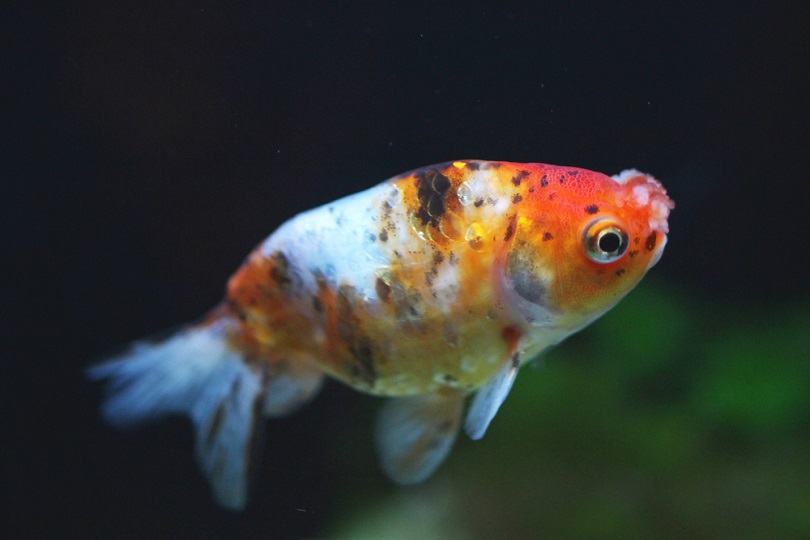
- Defining features: No dorsal fin, otherwise ‘plain’
- Description: The egg-fish is like the pompom with no nasal growths, the celestial with normal eyes, or the lionhead / ranchu with no wen hood. All the same shape, an egg-fishes defining feature is a lack of a feature.
- Body: Egg-shaped
- Tail: Double
- Dorsal fin: No
- Eye Type: Normal
- Wen hood: No
- Color: Mostly red or orange, with white patterning but other colors do exist
It’s hard to find a Phoenix goldfish in the United States. Breeders are working to change that right now, though. What do they look like? They are round like an egg (that’s why they’re sometimes called egg fish). No wen, no dorsal fin…just a long flowing tail. They come from China in lots of different color patterns. They grow 6 to 8 inches long.
21. Tamasaba
These are basically single-tailed Ryukin; they have the same deep body and arched back, but they lack the double tail. The tail it does have is long and flowing. The Tamasaba is surprisingly fast for its deep body. Red and white are common color patterns, but they can come in others. They get to be about 8 inches long.
Miscellaneous Types of Goldfish Sometimes Seen
22. Froghead Goldfish
Not a very appealing name for this fish, wouldn’t you agree? (Even worse is its alias: “Toadhead!”) The Froghead is similar to the Bubble Eye with a wider head. It has less developed bubble sacks and more developed cheeks. Most of the time they don’t have a dorsal fin. Sometimes they might have a bit of wen growth too. They get to be 6 inches long.
23. Lionchu
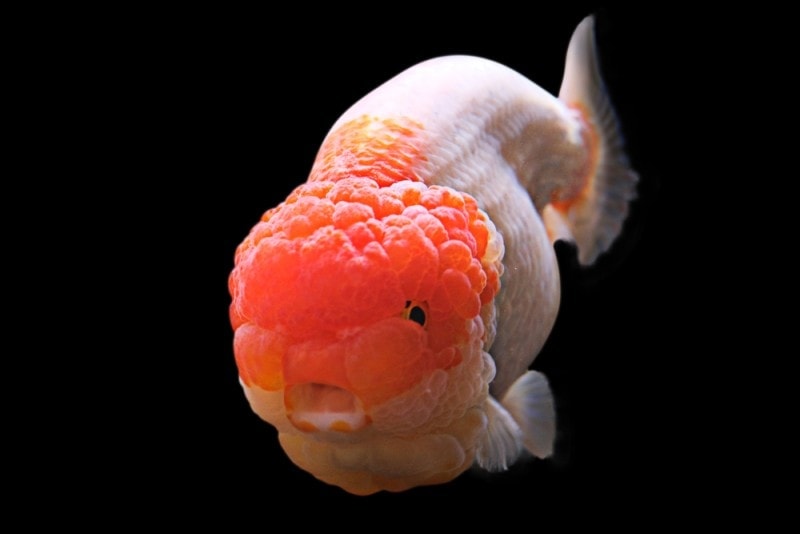
The lionchu goldfish is a cross between a lionhead and ranchu, hence the contracted name of the two.
The aim is to bring together the best characteristics of the two, with a highly arched back and deep body of the ranchu, with the biggest of wen hoods as seen on the lionhead.
A relatively new breed, they have only been officially recognized since 2006.
- Defining features: Huge wen hood and a highly arched back
- Description: The ‘Lionhead-Ranchu’, a cross resulting in a large wen hooded goldfish like the lionhead, and a highly arched back like the ranchu
- Body: Egg-shaped
- Tail: Double; short and small
- Dorsal fin: No
- Eye Type: Normal
- Wen hood: Yes, very large
- Color: Mostly red or orange, with white patterning; other colors do exist
24. Nymph Goldfish
Description: Literally, any goldfish should be born with a double tail as per its type, but is born with a single due to a recessive gene.
Therefore, a nymph can look exactly like any fancy double-tail variety, just with a single tail.
Infographic – Goldfish Type Identification Chart

You can use the following chart to identify any of the main types of goldfish discussed above, by using the process of elimination, answering simple questions as you go down the chart.
What Do You Think?
Some people don’t want a goldfish with all the bells and whistles. Others say, “Bring it on! The fancier the better!” Now I have a quick question for you: Have you figured out which goldfish variety is your favorite from this post? I’d love to hear which type of goldfish YOU like. One last thing: If you want to know the ins and outs of taking care of your goldfish, be sure to grab, The Truth About Goldfish!
You might also be interested in:
Featured Image Credit: Nature and Life, Shutterstock
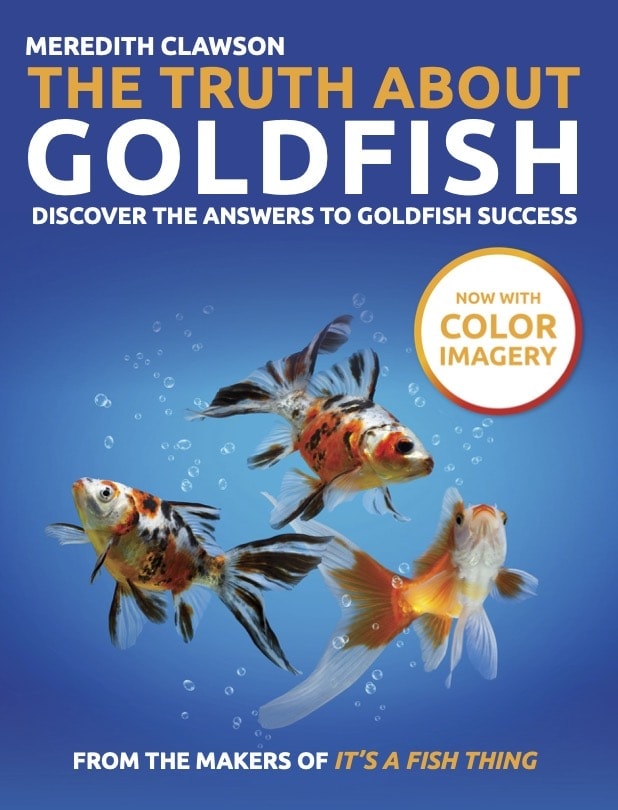
 Slimbodied/Streamlined Goldfish with a Double Tail
Slimbodied/Streamlined Goldfish with a Double Tail


